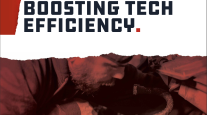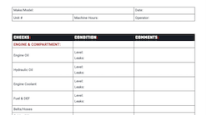Features Editor
A Brave New Trucking World — Again?
This story appears in the Jan. 23 print edition of Equipment & Maintenance Update, a supplement to Transport Topics.
This issue of Equipment & Maintenance Update marks the first of 2017, which could be a year of change for the United States and quite possibly for trucking.
 Fran Lysiak
Fran LysiakAs I write this, Republican Donald J. Trump, business mogul and former reality television star, was scheduled to take the oath of office Jan. 20 as the 45th president of the United States.
Given the change in the nation’s leadership, uncertainty abounds in this new year as to what lies ahead for the trucking industry — and the laws and regulations that already have had a profound impact on the research, engineering and design of tractors, trailers, engines, tires and all of the other numerous parts and components of big rigs that are on the road today. Indeed, a page 1 story in the Jan. 2 issue of Transport Topics carried the headline: “‘Expect the Unexpected’ for Trucking, Nation.”
Among the open questions regarding the then-incoming Trump administration was whether the Environmental Protection Agency would reverse course on reducing emissions and imposing fuel-efficiency standards for trucks.
Just this past summer, the Obama administration released its Phase 2 rule on greenhouse-gas emissions for heavy- and medium-duty trucks, pushing the industry to make tractors and trailers that are more aerodynamic and fuel-efficient but safe and durable.
Trucks and their engines have long been regulated on their emissions — including the Phase 1 rule on greenhouse gases now in force — but this latest regulation, crafted by EPA and the National Highway Traffic Safety Administration, marked the first time trailer makers would face federal mandates on aerodynamics and low-rolling-resistance tires.
While the future of federal regulation on truck emissions may have become cloudier, it was business as usual, for now at least, for E&MU’s first issue for 2017, with a glimpse of the impact on trailer makers with Phil Romba’s column.
He writes: “The closer we get to Jan. 1, 2018, the more clearly we see that high fuel prices nearly 10 years ago drove the equipment trends today that will ultimately be deployed to satisfy the first round of Phase 2 requirements.” He notes these federal standards imposed on semi-trailers is “creating what many consider to be a brave new world for trailer makers and suppliers of aerodynamic devices.”
The impact on trailer makers will be explored further in stories scheduled to run later this year in E&MU.
The lightweighting of Class 8 tractors, with new designs and materials such as aluminum, was a related topic covered by contributing writer Mindy Long’s story.
She writes: "The trend toward lighter materials “helps original equipment manufacturers offset the additional weight from emission-reduction systems and aerodynamic devices that help them meet federal greenhouse-gas regulations.”
Meanwhile, the advancement of active safety systems, such as adaptive cruise control and collision mitigation, are explored from a maintenance perspective. Contributing writer Steve Sturgess writes that the position and operation of the radar sensors used by many of these systems do cause some concern among maintenance managers.
The increasing complexity of trucks also is addressed in this issue’s two cover stories. One concerns what truck dealers would like their fleet customers to know about servicing modern trucks equipped with advanced electronic and emission controls.
The other addresses how service in the aftermarket is shifting from a “fix as fail” approach to an era where preventive maintenance is becoming the new norm. At the same time, other trends also are reshaping the aftermarket, including more competition as well as the influence of millennials working in parts procurement and their expectations for online access and e-commerce.
Looking ahead, if there are any regulatory changes — sweeping or otherwise — that could impact trucking and its equipment and usher in a “brave new world” of a different kind, this publication will continue to keep you up to date.




